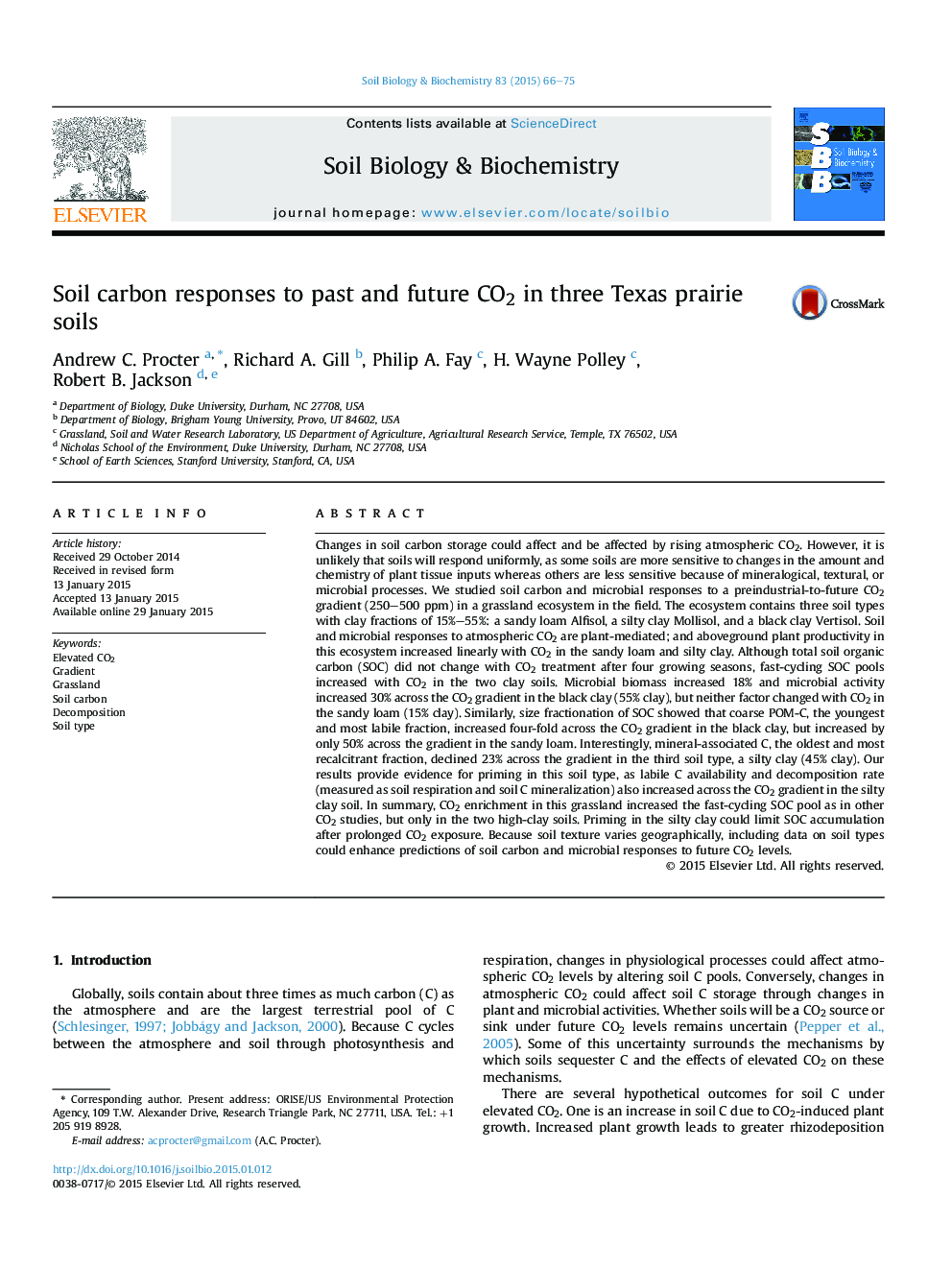| کد مقاله | کد نشریه | سال انتشار | مقاله انگلیسی | نسخه تمام متن |
|---|---|---|---|---|
| 8364264 | 1542601 | 2015 | 10 صفحه PDF | دانلود رایگان |
عنوان انگلیسی مقاله ISI
Soil carbon responses to past and future CO2 in three Texas prairie soils
دانلود مقاله + سفارش ترجمه
دانلود مقاله ISI انگلیسی
رایگان برای ایرانیان
کلمات کلیدی
موضوعات مرتبط
علوم زیستی و بیوفناوری
علوم کشاورزی و بیولوژیک
دانش خاک شناسی
پیش نمایش صفحه اول مقاله

چکیده انگلیسی
Changes in soil carbon storage could affect and be affected by rising atmospheric CO2. However, it is unlikely that soils will respond uniformly, as some soils are more sensitive to changes in the amount and chemistry of plant tissue inputs whereas others are less sensitive because of mineralogical, textural, or microbial processes. We studied soil carbon and microbial responses to a preindustrial-to-future CO2 gradient (250-500Â ppm) in a grassland ecosystem in the field. The ecosystem contains three soil types with clay fractions of 15%-55%: a sandy loam Alfisol, a silty clay Mollisol, and a black clay Vertisol. Soil and microbial responses to atmospheric CO2 are plant-mediated; and aboveground plant productivity in this ecosystem increased linearly with CO2 in the sandy loam and silty clay. Although total soil organic carbon (SOC) did not change with CO2 treatment after four growing seasons, fast-cycling SOC pools increased with CO2 in the two clay soils. Microbial biomass increased 18% and microbial activity increased 30% across the CO2 gradient in the black clay (55% clay), but neither factor changed with CO2 in the sandy loam (15% clay). Similarly, size fractionation of SOC showed that coarse POM-C, the youngest and most labile fraction, increased four-fold across the CO2 gradient in the black clay, but increased by only 50% across the gradient in the sandy loam. Interestingly, mineral-associated C, the oldest and most recalcitrant fraction, declined 23% across the gradient in the third soil type, a silty clay (45% clay). Our results provide evidence for priming in this soil type, as labile C availability and decomposition rate (measured as soil respiration and soil C mineralization) also increased across the CO2 gradient in the silty clay soil. In summary, CO2 enrichment in this grassland increased the fast-cycling SOC pool as in other CO2 studies, but only in the two high-clay soils. Priming in the silty clay could limit SOC accumulation after prolonged CO2 exposure. Because soil texture varies geographically, including data on soil types could enhance predictions of soil carbon and microbial responses to future CO2 levels.
ناشر
Database: Elsevier - ScienceDirect (ساینس دایرکت)
Journal: Soil Biology and Biochemistry - Volume 83, April 2015, Pages 66-75
Journal: Soil Biology and Biochemistry - Volume 83, April 2015, Pages 66-75
نویسندگان
Andrew C. Procter, Richard A. Gill, Philip A. Fay, H. Wayne Polley, Robert B. Jackson,